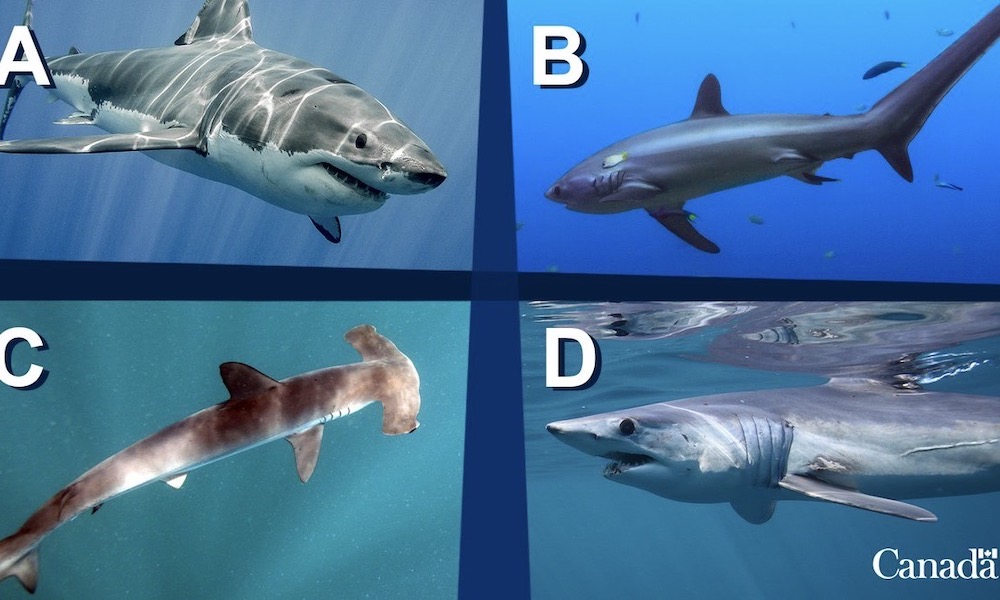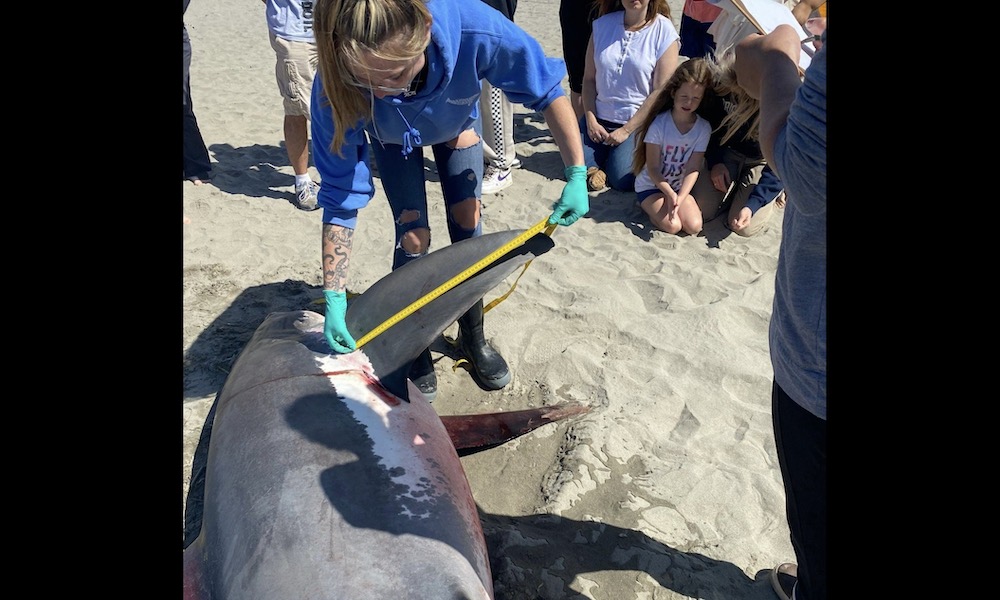Canada’s Department of Fisheries and Oceans on Wednesday tweeted a quiz asking viewers if they can guess which of the four sharks in the accompanying image is a mako shark.
We’ll take it a step farther and ask viewers to identify all four sharks in the photo. (Answer provided below.)
Fisheries and Oceans included a link that contains information about the shortfin mako shark and explains that the species is classified as endangered in Canada.
Happy #NationalTriviaDay!
Do you know which shark is the mako shark? Share your best guess below! 👇 pic.twitter.com/Qom3L0NPJo
— Fisheries and Oceans (@FishOceansCAN) January 4, 2023
Mako sharks are found globally in tropical and temperate waters, but in the North Atlantic the species is considered to be comprised of a single population.
The sleek and powerful predators and can attain bursts of 40-plus mph while attacking prey such as tuna or swordfish.
Mako sharks can measure 12 feet and weigh more than 1,000 pounds. (The world record catch, set off Massachusetts in 2001, stands at 1,221 pounds.)
In the comments section of the Fisheries and Oceans tweet, several followers provided the correct answer, and a few identified all four species.
The types of sharks, in order: A) White shark, B) Thresher shark, C) Hammerhead shark, and D) Mako shark.



